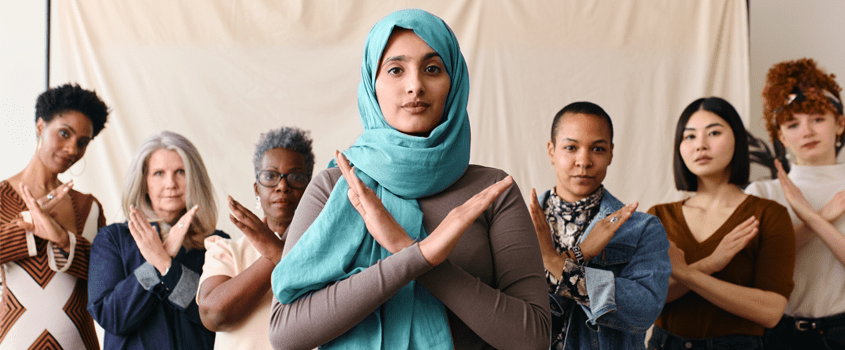republic onboarding
Internet Banking
-
Savings & Chequing
-
Savings Accounts
Growing up with a plan for tomorrow
For youths between the ages 13 to 19 years
Shape your future
Helps you to build your nest egg
Saves you time and money
The wise investment instrument
Earn more on your Foreign Accounts
Chequing Accounts
Bank FREE, easy and convenient
A world of convenience and flexibity
Invest and enjoy the best of both worlds
A value package designed for persons 60 +
Life Stage Packages
Banking on your terms
Getting married?
Tools & Guides
Make an informed decision using our calculators
Help choose the account that’s right for you
All Our Cheques Have A New Look!
-
-
Electronic Banking
-
EBS Products
Open a deposit account online
Pay bills and manage your accounts easily
Banking on the Go!
Welcome to the Cashless Experience
Top up your phone/friend’s phone or pay utility bills for FREE!
EBS Products
Make secure deposits and bill payments
Access your accounts easily and securely with the convenience of Chip and PIN technology and contactless transactions.
Access cash and manage your money
Where your change adds up
-
-
Credit cards
-
Credit Cards
Credit Cards
Additional Information
-
-
Prepaid Cards
-
Pre-paid Cards
-
-
Loans
-
overview
To take you through each stage of life, as we aim to assist you with the funds you need for the things you want to do
We make it easy to acquire financial assistance for tertiary education through the Higher Education Loan Programme
We make it easy, quick and affordable to buy the car of your dreams
Tools & Guides
Helps you determine the loan amount that you can afford
You can calculate your business’ potential borrowing repayments
Republic Bank's Group Life Insurance will provide relief to your family by repaying your outstanding mortgage, retail or credit card balance in the event of death or disablement.
-
-
Mortgages
-
Mortgage Centre
Republic Bank Limited can make your dream of a new home a quick and affordable reality
New Customers
Block for MM- new user mortgage process
There are three stages you must complete before owning your first home
Tools & Guides
block for MM - personal - mortgages
-
-
Investments
-
Investment Products
-
Equity, Diversity, and Inclusion – Promoting Women in Leadership
You are here
Home / Equity, Diversity, and Inclusion – Promoting Women in Leadership
March 8, International Women’s Day, is usually a time when organisations and teams all over the globe celebrate the immeasurable value that women provide – not only to businesses and economies, but to societies, communities, and families. To life itself.
Within the celebration, there is introspection and a greater focus on doing more in pursuit of women’s empowerment and gender equity in leadership. I want to emphasize that the goal is gender equity as opposed to gender equality. This is a call that falls to all leaders – across every discipline, industry, and market – to act upon.
And act upon, urgently.
Prioritising women empowerment in leadership, for current and future generations, has taken on an even greater sense of urgency, particularly as businesses and families, here and around the globe, continue to pick up the pieces and settle into life in the post-pandemic era.
It has not been an easy time for our teams by any means.
However, I think we could use the occasion of this International Women’s Day, as we look back at the past and ahead to the future, to draw upon the lessons learned along the way toward enhancing our collective efforts to empower women in leadership.
In celebrating women and their accomplishments everywhere, we should also remind ourselves that such leadership is a day-by-day process. It requires motivation, commitment, and the will to do what is necessary to ensure success.
So, as leaders coach, collaborate, and communicate to ensure that their leadership serves the greater good, they must also put themselves to the task by doing what they can to promote gender equity in leadership and women empowerment.
Day-by-day.
Build An Inclusive Corporate Culture. Allow me to go first.
At Republic Financial Holdings Limited (RFHL), we believe every team member should have equal opportunities to grow their careers. We believe in corporate diversity and inclusion.
We strive never to undervalue or take for granted what building a truly inclusive corporate culture entails because we understand that our culture is our lifeblood. We understand that our teams are our lifeblood.At the end of 2021, out of a total of more than 6,000 employees, more than 4,100 employees are women. Among our Group Executive leadership (our C-suite), there are 33 women and 67 men championing our teams across the Caribbean, Suriname, and Ghana.
At first blush, it is easy to look at the last statistic and rightfully take us to task on the fact that men outnumber women in the C-suite almost 2 to 1. However, we are building a culture. As we continue to build upon and create new programmes that empower women and promote diversity, we are optimistic of the changes that will come over time.
For instance, when RFHL signed the United Nations Principles of Responsible Banking in 2020, one of the sustainable development goals we prioritised is gender equity.
In so doing, through diverse, equitable and inclusive policies and programmes, we intend to continue building a culture that is inclusive, fair, and respects and meets the needs of our people.
As we look within our organisation, we also reach out to the people we serve. For example, along with our pledge for gender and race parity on our corporate governance boards within the Group and its subsidiaries, we also provide SME incubators for women-led business as a means of empowering their businesses and providing assistance, when needed.
But these are not starts. They are the follow-through on commitments made.
There is no endgame when it comes to building an inclusive culture. As our culture changes, it will become better and stronger. As it becomes stronger, our people become even more motivated to achieve in an environment that encourages that growth and development.
Make Parity the Essential Goal There is an old adage in the business world – “What gets measured, gets done.” When it comes to increasing representation and building an inclusive culture, many leaders default to the numbers game.
Too many leaders find themselves looking at, or thinking, “If we hire more women, then we’ll be seen as an inclusive organisation.”
People are not numbers. Women are not statistics.
Many organisations may have specific targets for women leadership in senior and executive roles, however, if the conversation on women’s empowerment is to be more than just talk, more also needs to be done in terms of avoiding falling into the trap of simply “staffing for staffings sake”.
In building a culture of women’s empowerment, everyone in the organisation must share an ongoing commitment to, and support of policies that meaningfully promote gender parity of all levels of leadership. This is simply about believing in the power of the team and providing the means for all to succeed.
It is leaders communicating to all what your organisation and your team should stand for.
It is working together to strengthen your corporate culture and unlocking the potential that comes from diversity and gender equity. In so doing, more can be done to identify and eliminate many of the obstacles in the paths of talented and ambitious women as they pursue leadership.
Because we are focused on people, not numbers.
As we become more focused on gender equity among our leadership teams and greater women’s empowerment, we become stronger as a team. Our people begin to see us and themselves more clearly within the larger picture. They begin to believe when they see meaningful action taken and results achieved. This only happens when parity is the goal. Not quotas.
Actively prepare women for leadership roles In a word, “coach”.
People are more likely to be promoted if they are actively coached on career advancement. As leaders, we have an important role to play in ensuring that emerging women leaders are given the same opportunities to showcase their abilities, flex their roles, network with senior leaders, and promote their visibility at the executive level.
Actively preparing women for leadership calls for all leaders to rediscover the value of diverse leadership styles. It calls for that basic understanding (and perhaps, relearning) of the various ways in which men and women work, communicate, and lead. Then it requires adjusting and readjusting our approaches to suit. What’s more, at every step of the way, there must be accountability, transparency and parity.
Sounds like a lot, doesn’t it?
Well, it actually isn’t once we remember one main thing: We are all human.
It is human to want to learn and to want to teach. At every touchpoint in the journey toward empowerment is an opportunity to do both – teach and learn. Understanding this is vital in promoting and achieving women leadership empowerment. Incorporating and encouraging those differences provides strength and flexibility to an organisation’s leadership, and that diversity of thought often leads to success – and not just the bottom line.
Actively coaching our people also means that we, as leaders, must be willing to engage in honest discussions of gender bias, particularly unconscious gender bias.
Which can be difficult – seemingly impossible.
But as we have explored before, compassion, flexibility, the ability to truly listen, and demonstrating the will to act are some of a leader’s greatest tools. From these tools, it becomes easier to build frameworks that include diversity training programmes, empowerment and teaching workshops, and education and sensitisation programmes.
We have the tools to empower. We have the tools to listen. We have the tools to coach. Let’s use them.
Reigniting the sense of urgency
While March 8 may be International Women’s Day, as we have seen, gender equity and empowerment are a full time responsibility for leaders and teams alike. As leaders, we simply cannot afford to only make decisions and take steps when the time is topical.
If we are to build an inclusive culture, achieve parity, and prepare our next generation of women in leadership, then we, as leaders, must continue to expand our thinking and our actions. It is not about numbers or quotas.
It is about Diversity, Equity, and Inclusion.
This year in particular, as we rebuild and reclaim our lives from the pandemic, we especially honour the women who continue to give their all in moving our organisations, our society, and our lives onward and forward.
As leaders, on and for International Women’s Day, let us all keep that fire to achieve burning – not only within them and ourselves, but within every single boy and girl looking on at us for inspiration, example, and hope.
Happy International Women’s Day! Let’s lead and build together.
COMPANY INFORMATION
Banking Segments
Press & Media
Contact Us
© 2025 Republic Bank Limited. All Rights reserved.







 Nigel Baptiste
Nigel Baptiste
